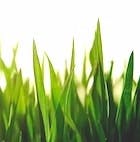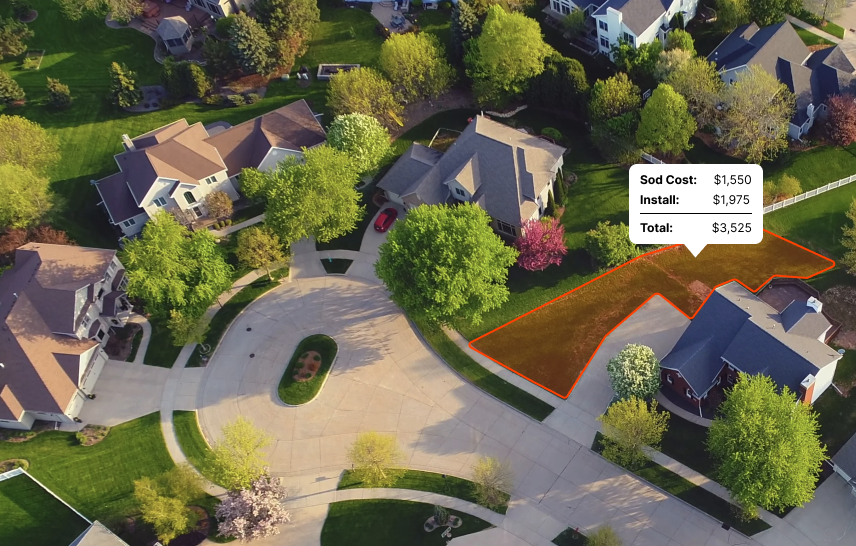Go for the tough cookies, the grass types that don't mind a drought, scoff at diseases, and can weather both a summer roast and a winter chill. That's your Maryland lawn dream team.”
Introduction
Let's chat about Maryland, a sizzling summer star and a mild winter wonderland. It's practically steamy, showered with humidity and rainfall all year round.
And the ideal time to go green in this state? Aim for the chillier shoulder seasons of fall and spring, when the earth is cool and drinks up the rain, perfect for your grass to spread its roots.
Now, Maryland straddles the transition zone in the grass world. That's right, this place is versatile, playing host to both warm and cool-season grasses.
But don't be fooled, Maryland can be a tricky host. The sizzling summers and frosty winters don't play nice with every type of grass.
What are the best sod types for MD?
In the world of landscaping, not all grasses are created equal. Each thrives in a specific climate zone: cool, warm, or transition.
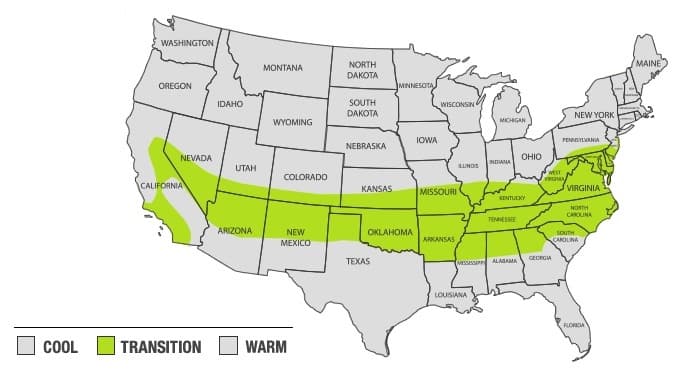
Maryland, with its transition zone climate, prefers a particular set of grasses that relish the a wide range of temperatures. The following sods are the easiest to grow and maintain in Maryland:
While it's possible to grow grasses meant for other regions with proper care, attention and timing, these are the most common grasses in Maryland for residential lawns.
Level Up Your Lawn Skills
Once per week we'll send you an interview from someone who has mastered the art of lawn care.
Recommended species for shade
Alright, folks. We’re gonna talk about the best grass for shade in Maryland, and we're not beating around the bush.
First up, Fine Fescue. This warrior of the shady spaces is your go-to. Your sun-deprived patches will love it. We’re not talking complete darkness, but it's pretty content with about 4 hours of sunlight each day. Cool climates? No problem for this tough guy. It laughs in the face of the cold Maryland winters.
Then you've got your Tall Fescue. This one's a bit more demanding. It's asking you for a minimum of 5 hours of sunlight daily. Picky, but can you blame it? The payoff is substantial, though. Deep, beautiful green hues in some less-than prime real estate.
Next, there's the St. Augustine grass. Not the first pick for Maryland because it prefers hotter climates, but it does withstand shade pretty well. If its water needs are met and it's getting at least 5 hours of sunlight, it can be a real show-stopper.
Last, but by no means least, Zoysia. Say it with us, "Zoysia." This sun-worshiper needs around 6 hours of those beautiful rays we call sunlight, but zero to hero comes to mind. It's disease-resistant and dense, putting on a real show when afforded enough light.
Now remember, grass isn't just a one-size-fits-all situation. Consider your soil, consider your dedication to watering, your willingness to fertilize and aerate. Figure out your light situation, and then delve into these stars of the shady world. Hours of sunlight are just the tip of the iceberg but hopefully we’ve shone a light on your options. Get out there, get planning, and get sodding.
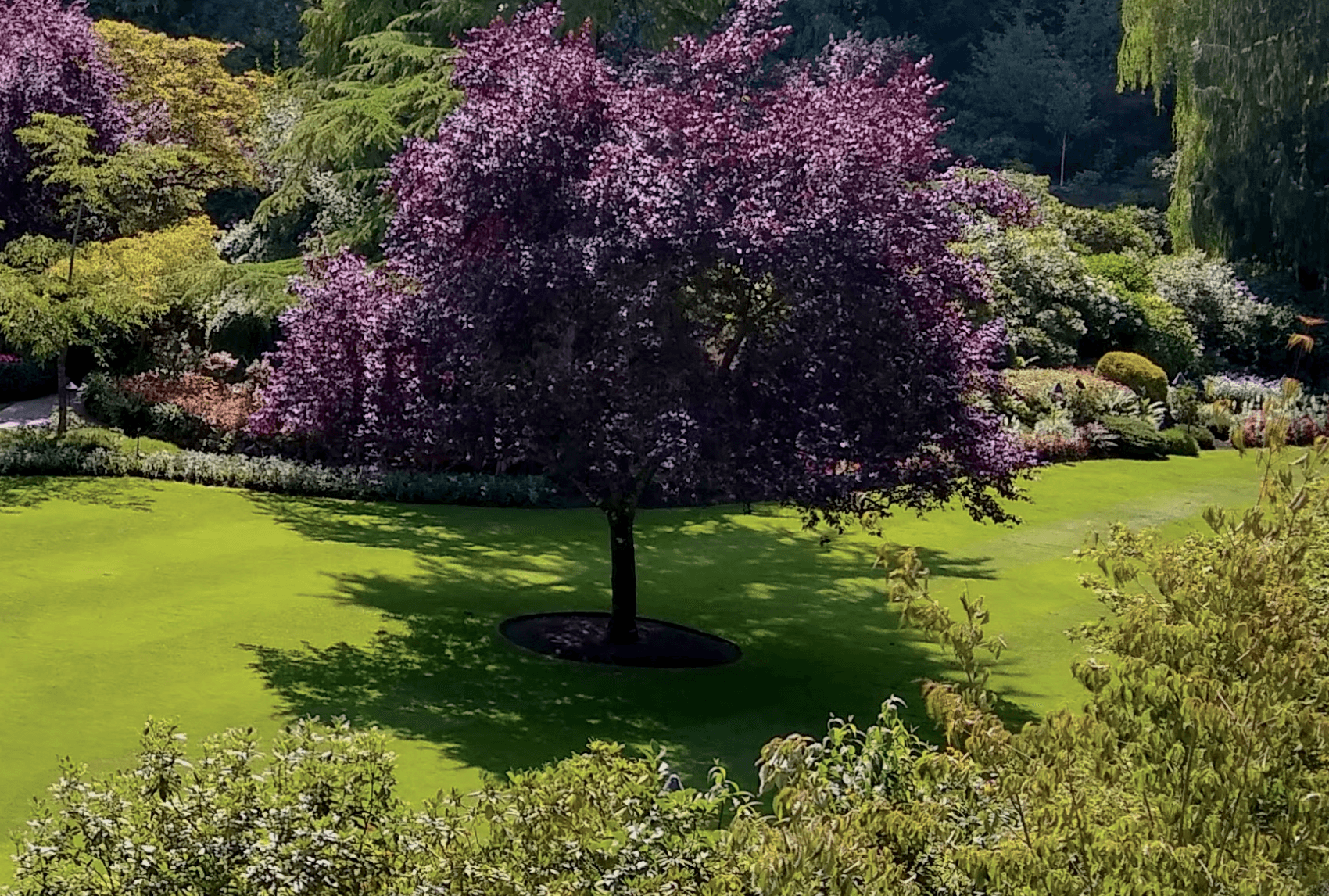
Recommended for full sun or partial sun
Choosing the right sod for your lawn depends heavily on the sunlight exposure in your yard. Different grass types have varying light requirements for optimal growth and appearance. Assessing whether your lawn receives full or partial sun is essential in selecting sod that will flourish and stay healthy in your specific environment.
Below are some sod options recommended for either full sun or partial sun conditions in MD:
| Grass Type | Sun | Good to Know |
|---|---|---|
| Bermuda | Full | Bermuda grass thrives in full sun and is known for its drought tolerance and ability to withstand high temperatures. |
| Zoysia | Full | Zoysia grass prefers full sun but can tolerate some shade. It is known for its dense turf and resistance to pests and diseases. |
| Tall Fescue | Partial | Tall Fescue is adaptable to a range of conditions, including partial sun, and is known for its deep root system and tolerance to drought. |
| Kentucky Bluegrass | Full | Kentucky Bluegrass prefers full sun and is prized for its fine texture, rich color, and ability to recover quickly from damage. |
| Perennial Ryegrass | Full | Perennial Ryegrass thrives in full sun and is known for its rapid germination, fine texture, and bright green color. |
What varieties stay green year-round?
As with anything agriculture related, there is some nuance to this question. There are many grasses that can stay green year round in but it depends heavily on your location within Maryland as well as any microclimates that may exist.
The following grasses have the ability to stay green year round in Maryland:
| Grass Type | Caveats |
|---|---|
| Bermuda | It typically goes dormant and turns brown after a few hard frosts in the fall and stays that way until temperatures consistently hit the 60s in the spring. |
| Zoysia | It can stay green nearly year-round in milder climates without severe winter freezes or overly high summer temperatures. |
| Tall Fescue | It typically stays green throughout the year in milder climates, given that it isn't overly stressed by heat or drought in the summer. |
| Kentucky Bluegrass | It can retain its green color for much of the year when well-maintained, though harsh winter temperatures can push it towards dormancy and a browner hue. |
| Perennial Ryegrass | It can stay vibrant and green throughout the year in many climates, unless conditions are extremely cold or dry. |
What is the best time to lay sod in Maryland?
For transition zones, consider the type of sod. For warm season grasses, aim for late spring. This gives them a full summer to establish before winter. For cool season grasses, fall is best, allowing roots to develop in mild temperatures. Whichever you pick, avoid extremes of summer and winter. So, late spring for warm grasses, fall for cool ones, and skip the severe seasons.
As you can see in the image below, you'll notice the most shoot growth (the grass above ground) and root growth in the spring and fall for cool season grases and during the summer for warm season grasses:
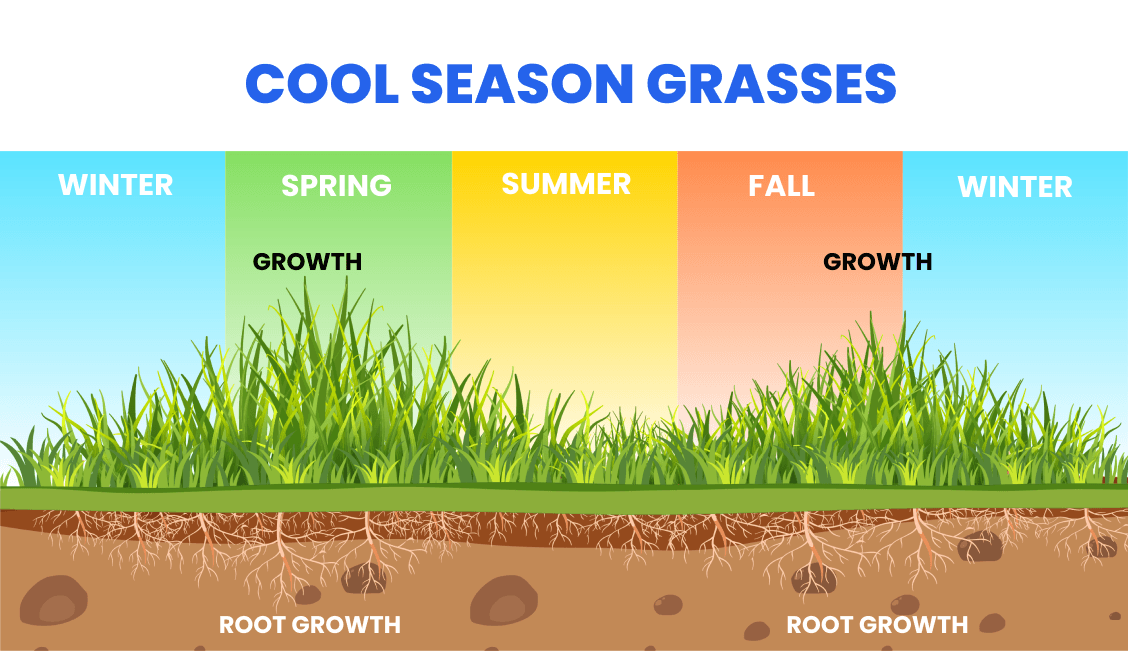
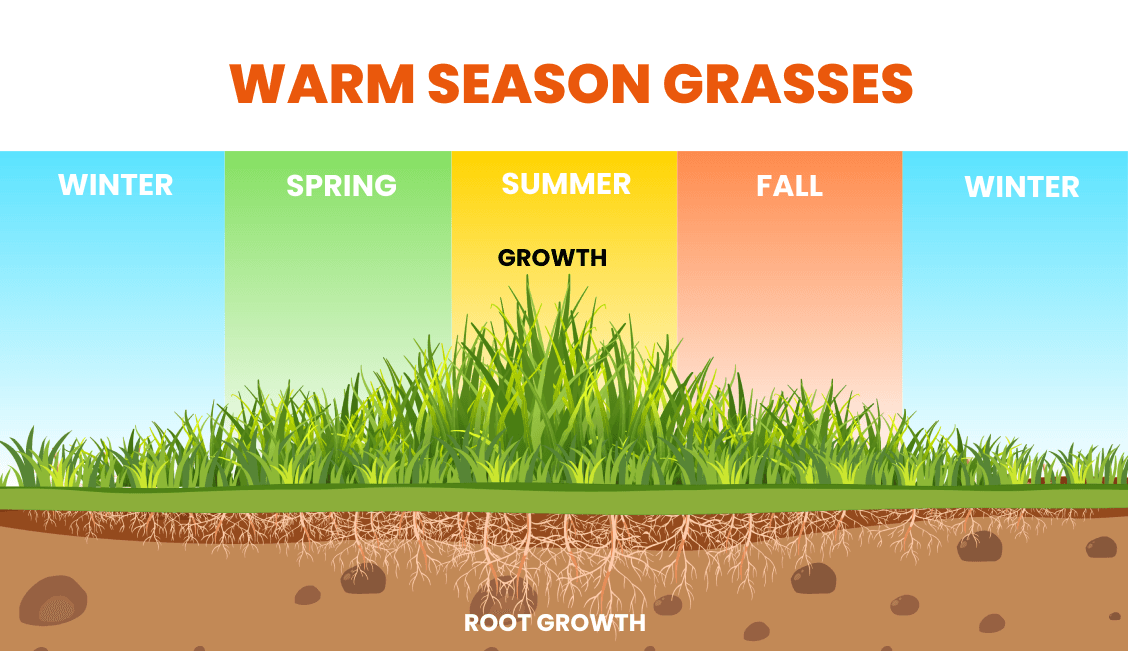
Find reputable companies for installing sod in MD
Here are the top problems you'll face when trying to get sod installed by a landscaping company:
- They're not transparent about pricing. You'll often get a quote that's way higher than you'd expect.
- They're hard to get ahold of on the phone or you'll reach out online but won't hear back.
- It's hard to pin them down for a specific date. Because you can only bring sod from the farm when there's decent weather, this causes some delays at times. It also has a short shelf life, so it's important to get it installed within a day or two of delivery.
We've done all the work for you. Click below to get a quote from one of the top installers in Maryland.
